Published on May 1, 2013
It was May Day in 1960, 53 years ago today in aviation history when the Soviets celebrated their national holiday. Military parades marched through Moscow’s main square in front of the Kremlin while the leadership looked on. It was a day off for workers and even the military. Unbeknownst to the Soviet planners in the hours before the holiday was to start, a CIA U-2C reconnaissance plane had been prepared at Peshawar, Pakistan. It was to fly a critical mission, the most ambitious yet attempted. The pilot, Francis Gary Powers, and a back up pilot, Bob Ericson, had been shuttled in for the mission.
Nothing would go right that day — for either the Soviets or the Americans. By midday, the U-2C would be shot down and Powers would be captured. As for the Soviets, despite the success achieved, they would have a cover-up on their hands. In shooting down the U-2C, almost everything went wrong. The air defense operation had been a comedy of errors and, despite the acclaim they would receive, one of their pilots was dead, shot down in a friendly fire incident, and the victorious SA-2 unit had nearly killed themselves by accident during the engagement. Ultimately, except for the one pilot killed that day, they had just gotten lucky.
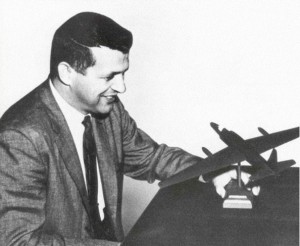
The U-2 Flight
When Francis Gary Powers took off in the morning hours from Peshawar, Pakistan, he was flying a mission that had already been delayed twice due to weather. The original aircraft shipped to Peshawar, the U-2C Article 358, had been shipped back to Turkey’s Incirlik AB. A second U-2C plane, known as Article 360, and carrying tail number 56–6693, had been brought in — it was fitted with the more powerful J-75 engine, giving it higher altitude capabilities. Fuel had been ferried in on board a C-124 and the mission brief had been completed in complete secrecy. The operation was so secret that even the host government of Pakistan wasn’t sure what the USAF and CIA were doing at the base at Peshawar.
Francis Gary Powers himself was the most experienced U-2 pilot in the program. Prior to this flight, he had flown 27 operational missions in U-2s, including one that flown over China, one over the USSR and six along the Soviet border. He had been in the program since 1956 and was the perfect choice for the mission given his breadth of experience in the plane. For the mission, his aircraft was fitted with a B-model camera and carried, among other classified equipment on board, a System-VI ELINT unit which collected data about enemy radars and communications en route.
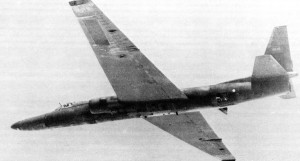
The mission that day was planned to fly over and photograph the full range of high priority targets within the Soviet Union. First, after having climbed to altitude while flying toward and over Afghanistan, the U-2C would fly over the Soviet Union’s six ICBM sites — all that the Soviets had at the time — with two being at Baikonur Cosmodrome and four at Plesetsk Cosmodrome. The flight would then continue northwest and overfly the town of Chelyabinsk-65, where a Soviet nuclear reactor was operating, producing plutonium. By measuring temperatures of the nuclear power plant’s exhaust gases, the US hoped to be able to estimate plutonium production levels, which in turn would give America an estimate at the rate the Soviets were building their atomic weapons arsenal. Then, it would fly over Sverdlovsk, Kirov, Yur’ya, Plesetsk, Severodvinsk, Kandalksha, and the Russian naval base at Murmansk. Finally, with the intelligence mission completed, the U-2C would turn west and descend to land at Bodo, Norway.
To ensure the flight’s safety, a course had been plotted the flew by the new Soviet surface to air (SAM) missile sites and kept the plane at 70,000 feet of altitude, far above the best altitudes that US intelligence said could be achieved by the best high altitude fighter-interceptor the Soviets had, the Sukhoi Su-9, which NATO code-named the “Fishpot”.
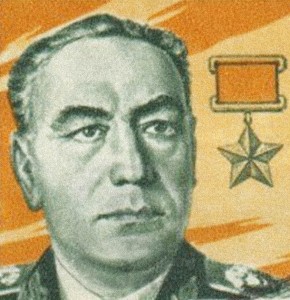
The Soviet Response
Meanwhile, on the Soviet side, Marshal S. S. Biryuzov, Commander-in-Chief of the Air Defense Forces, was on edge. CIA overflights with the U-2 had been taking place with some frequency, having started over western Europe, but then expanding to flights that crossed the very heart of the Soviet Union. No less than Soviet Premier Nikita Khrushchev himself had been on the phone with the Marshal, demanding that the flights be shot down. He would settle at nothing but positive results — and failure in the Soviet system was not a fate that Marshal Biryuzov wished to contemplate. His ears still stung with the terms used, he recalled Khrushchev’s words: “Shame! The country is giving air defense everything it needs, and still you cannot shoot down a subsonic aircraft!”
Now, it was May Day and Marshal Biryuzov was dismayed to hear that another American spy plane was approaching. At least one bit of good news was that it was easier to track the incoming American plane because so few other aircraft were flying on the holiday. Knowing the special significance of the day and considering what a failure on this day — of all days — would mean, he ordered his missile defense forces and his high altitude interceptors to launch. Despite his best efforts, however, what followed was a string of Soviet screw ups, the first of which happened from the first moment his order went out. With the May Day holiday, it turned out that the bulk of the Soviet Air Force and missile defense units were off duty for the holiday. Critically, not a single one of the Su-9 Fishpot pilots could be found. Further, the Su-9 fighter planes weren’t even armed with missiles. Though in retrospect, that made perfect sense since the units he was calling to instant action were in the interior of the country. No war was on the horizon, it was a holiday, so why should they be standing at readiness? At the moment, however, it was maddening.
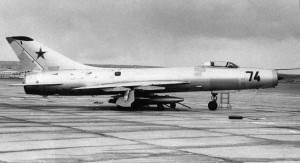
Finally, a single Soviet Su-9 pilot at an airbase near Sverdlovsk was located. His name was Captain Igor Mentyukov. When he was found by panicked base personnel, he was in his dress uniform waiting at a bus stop just outside the base, on the way to see his pregnant wife and mother for a holiday picnic. Brought hastily back to operations, the pilot explained that he wasn’t even in flight dress. With the speed of the approaching high altitude plane, he had to confirm that it would be impossible to get into his pressure suit, to the plane, get it armed and ready for launch before the American would have passed by. Word was relayed up to Marshal Biryuzov that there wasn’t time — in response, he ordered that the pilot take off anyway and ram the American spy plane if he could get to it.
First Interception
As Capt. Mentyukov put on just his helmet, he considered what the flight would be like in his dress uniform, without the benefit of the high altitude pressure suit. He just hoped that the plane’s pressurization would not fail — if it did, he would certainly perish, his blood would boil at the altitudes he would be flying. Considering his orders, he knew too that if he was successful, this would be his last flight — ramming another plane at 65,000 feet (the altitude the Soviets had thought the U-2C was flying) would mean that he would either day on impact or be thrown into the thin, low pressure atmosphere and die.
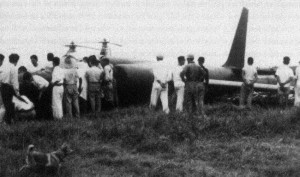
Yet the orders were clear — and from the Air Marshal himself. He wondered what the target must be. It might be a bomber armed with a nuclear weapon, he thought, and thus, it had fallen on him to do his duty to save the Rodina, the Motherland of Russia. As he ran to the flight line, he called to the others to take care of his mother, his wife and their unborn child. Flipping the switches, he lit the engine and pushed the power forward aiming down the runway, he pulled off into an emergency take off and climb. Taking vectors from the Ground Control Intercept officer (GCI), he was vectored directly behind it in a tail chase. Soon he was at maximum altitude, still well below the U-2C’s height, but closing rapidly in full afterburner. The plane was doing nearly 1,300 mph.
Though he wasn’t high enough, the Soviets had developed a few tricks to solve that problem. In tests, they had developed a zoom climb procedure that enabled their Su-9 fighters to go above their absolute ceiling — but could they really fly higher than 65,000 feet? The pilot would climb to the maximum height, accelerate in full afterburner to maximum speed and then point the nose down to accelerate even faster in a shallow dive. Then, with a sharp pull-up, the plane would rocket upward in a zoom climb well above its maximum ceiling. Momentum and thrust alone would carry the plane into the thin air higher up, where his wings and control surfaces had no effect. If everything worked right, the theory went, a pilot could get to the altitude of the American airplanes and get a missile shot off before falling back to a controllable altitude.

As Capt. Mentyukov accelerated to maximum speed, he knew that his mission to ram the American was even more unlikely to succeed. He would have to zoom up and, at the peak altitude he could attain, somehow collide with the American plane, yet do so without any control over the airplane itself in that high, thin air. GCI declared the target to be dead ahead at a range of 15.5 miles. He was in full afterburner and began the zoom climb sequence, switching on the radar to acquire the target. Instead, he was stunned to find the radar inoperative.
There he was, not even in a pressure suit, at the top of the aircraft’s ceiling, with no missiles on his rails and he couldn’t even get a radar fix on the target to ram it! The GCI stepped in with continuing instructions, watching slowly on their scopes far below as the two dots merged into one. It didn’t take long at nearly 1,300 mph. The speed of the American plane was less than half his own. The closing speed equated to nearly 1,000 feet per second.

Even spotting the American plane with those closing speeds would be nearly impossible. The GCI called out heading corrections as Capt. Mentyukov zoomed nearly vertically aiming blindly at the point in space where the other aircraft should be. Somewhere above him, against the blackness of the high altitude sky, the American plane was flying made it nearly invisible, except from above as seen against the sunlight Earth below.
As the plane peaked, for a brief instant, he saw it, the thin-winged long fuselage of the U-2C spy plane — it was unlike any plane he had ever encountered before. Incredibly, he had zoomed past it and was now harmlessly above it as he flashed past. As his Su-9 fighter plane fell off the zoom and tumbled back toward lower, thicker air, he glanced up, catching another glimpse of the plane, which he thought might have been in a turn. Then, he shut off the afterburner and, critically low on fuel, took back control of the plane, pulled out of the dive and took a heading for Sverdlovsk. He had done his best — if the Americans were about to drop an atomic bomb on Russia, he had failed to protect his country.

In later years, Capt. Mentyukov would claim that maybe his wake turbulence had downed the U-2 spy plane, not the later missile fire — he was wrong, however, as the U-2C continued on for some time longer, flying perfectly under control before it was again engaged. Francis Gary Powers, the American pilot, never even saw Capt. Mentyukov’s Su-9 fighter, as most probably he was looking through the scope at the ground below when the Su-9 flashed past close by and just above him.
SA-2 Missile Fire and MiG-19 Flights
The next phase of the engagement involved a series of launches from Soviet SA-2 SAM missile sites. Soviet air defense radars and early warning systems were lit up with reflections from the high flying U-2C. The Soviet missile teams could see the plane, at least intermittently as it passed from one sector to another, sometimes disappearing in the gaps in radar coverage. One by one, they passed off radar contacts to each other as the plane proceeded deeper and deeper into Soviet territory, but could they shoot it down? The target was at 70,000 feet and the best the SA-2 could achieve was about 85,000 feet. To do that, however, meant that the missile had to fly straight up — even a few miles off the center point of the “dome of coverage” meant that the SA-2’s top altitude would be lower than the American plane.

The Soviet Air Defense forces waited for the American plane to cross into one of the engagement zones, a narrow high altitude “footprint” which a missile could reach as it neared its highest altitudes. Again and again, they were stymied as the U-2C pilot approached a zone, but then turned away each time, seemingly at the last moment. It was as if the Americans were toying with the Soviet systems, as if they knew exactly where the Soviet SA-2 launch sites were located. In the aftermath of the events that day, Marshal Biryuzov would later consider whether a spy in the Kremlin or on his staff had been cooperating with the Americans, but for now, he had to just wait and listen to the reports come in as the American plane leisurely turned a little to the left and right to dodge its way through the gaps in his air defense network. Finally, the American plane approached the engagement zone of the site commanded by Major Mikhail Voronov.
Maj. Voronov watched on the scopes as the high altitude intruder closed, but then was dismayed too as the plane turned away at the last moment. “Target is moving away”, he radioed. Then, incredibly, he observed as the American plane turned back onto its original course — by fluke of chance, the CIA mission planner had not known of Maj. Voronov’s SAM site and, as such, had not plotted a course to avoid it.

The Russian SAM commander leaned forward intently as the American intruder came to the edge of his engagement zone and then crossed inside. “Fire two missiles!” he ordered. His ground crew, cognizant of launch failure rates from their training, instead chose to fire three. Incredibly, two of the three SA-2s didn’t leave the launchers. The fail safe system had engaged. Their own missile control van was parked in the launch trajectory and the system, recognizing that, had shut down the launch. Had it not done so, Maj. Voronov and his radar operators would have been killed. Voronov cursed the word, “Failure”, as only a single missile soared upward, somehow flying perfectly toward the U-2C and Francis Gary Powers.
